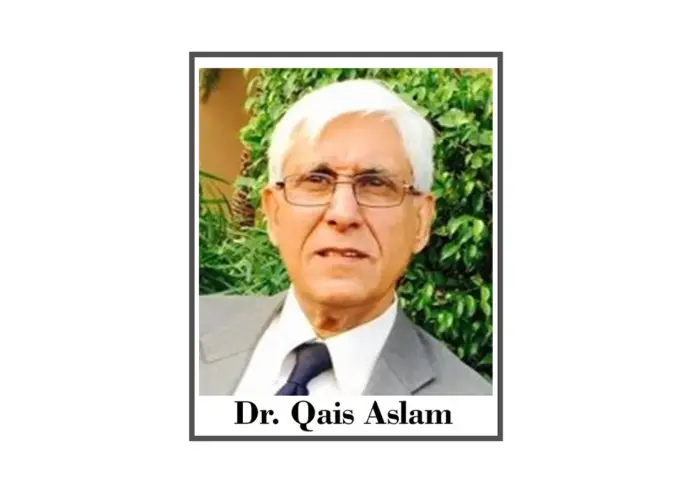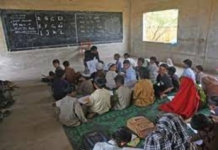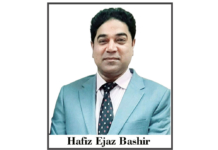Since the Industrial Revolution almost 600 hundred years ago, modern states depend on Industry for production of material and technological goods, employment of its labore force, research in innovative processes and methodologies as well as enhanced economic growth both for domestic as well as for international markets.
It is the level of industrial output (quality as well as quantity), infrastructure and innovation of new products and processes that differentiate developed from developing and less developed nation. Industry as an important sector of the economy sits in the middle of both agricultural sector and the services sector. Apart from itself, industry supplies finished goods and machines to the other two sectors and demands agricultural raw materials and services from the other two sectors from the economy.
From simple manufacturing processes to mass production through conveyer belt processes and now with the advent of robotics and artificial intelligence modern industries have transformed themselves from producing semi-manufacturing to production of consumer goods, to production of machines and producers goods towards production of highly sophisticated machines, vehicles, airplanes, ships, armaments, robotics and information technology related products that value add to the raw materials in multiple ways. Today, industry around the world outsource a majority of their processes in order to save costs and to win international contract, therefore, they have started cooperation between technological and innovative firms in other countries the world over. All this needs high investments in R&D, infrastructure, logistics and skilled manpower as well as strategic cooperation even between market rivals. Governments around the world facilitate a part of this investment through fiscal policy, investments in research, infrastructure, skill based and analytic education and also demand an array of products from the private sector. Governments also set guidelines and benchmarks for industry to follow in regards to green technologies, environmental protection, safety and health as well as quality enhancement for greater protection of the society and industry inclusively.
SDG Goal 9 underlines “Build Resilient Infrastructure, Promote Inclusive and Sustainable Industrialization and Foster Innovation”. Goal 9 further states, “A functioning and resilient infrastructure is the foundation of every successful community. To meet future challenges, our industries and infrastructure must be upgraded. For this, we need to promote innovative sustainable technologies and ensure equal and universal access to information and financial markets. This will bring prosperity, create jobs and make sure that we build stable and prosperous societies across the globe” Target 9.1. is Develop Sustainable, Resilient and Inclusive Infrastructures. Target 9.2. is Promote Inclusive and Sustainable Industrialization. Target 9.3. is Increase Access to Financial Services and Markets. Target 9.4. is Upgrade All Industries and Infrastructures for Sustainability. Target 9.5. is Enhance Research and Upgrade Industrial Technologies. Target 9.6. is Facilitate Sustainable Infrastructure Development for Developing Countries. Target 9.7. is Support Domestic Technology Development and Industrial Diversification, and Target 9.8. is Universal Access To Information and Communications Technology.
As for Pakistan, a nation that has 4th largest population, a youth bulge (^0% of the population is below 30 years of age), and a territory that is 34th largest in the world with more than 70 million labor force and another 70 million (mostly women) home-based workers and has (after these floods) almost 12 million unemployed, it needs a strong industrial base in order to give employment to the future generations, to produce diversified value added products that enhances foreign exchange capacity of the country through multiple exports as well as enhance foreign exchange saving capacity of the country through production of import substitutes. The country also needs industry that can increase employment levels and income levels of the population. An industry that uses green technologies in order to become less dependent on fossil fuels and less pollutive to the environment. For the country to have such industry, Pakistan needs an advanced skill based education system for its children and infrastructural levels that can cope with supplying to the industry electricity produced through indigenous environmentally friendly sources, a road and bridges network that can facilitate the transportation of different types of goods and services through roads, air and sea cost-effectively and a fiscal policy that is development orientated with less export duties and incentives to such industries big and small, that promote exports, earn or save foreign currency and use IT related technologies through international cooperation or through using domestic skill based innovations and methodologies.
“Pakistan’s road network of 263,000 km consists of about 12,500 km of national highways, 93,000 km of provincial highways, with the remainder classified as either district or urban roads. The national highway network, which is less than 5% of the total road network, caters to about 80% of commercial traffic”. World data shows that “Listing of the primary kinds of transport compares the infrastructure of Pakistan with the average of all countries in Asia. The traffic routes have noticeable defects in many places and are often not in a particularly good condition. In terms of the length of its rail network, Pakistan ranks 105th in the world with 0.05 meters per inhabitant. In total, the rail network is 11,881 kilometers long. Freight traffic on the rails most recently totaled 8.08 billion tons and kilometers traveled. Passenger traffic reached 24.90 billion passenger-kilometers in 2018. Pakistan has 34 airports serving mainly passenger transport and some freight transport and 57 commercial harbors. Better highways throughout the country are being built either for defense purposes or under CPEC by the Chinese in order to facilitate China’s One Road, One Belt projects. The three main shipping ports of Pakistan are Karachi Port, Port Qasim also at Karachi (Sindh) and now under construction Gwadar port in Baluchistan. 61% of Pakistan’s electricity production is from non-renewable mainly oil and gas imported from the Gulf states and only 39% from domestic renewable sources, mainly hydel that produces 34% of electricity needs of Pakistan. One percent electricity is produced through nuclear and another 4% through coal. Pakistan has the capacity to produce electricity through wind, solar, biomasses, geothermal, weaves and other such renewable sources but lacks technology and know-how as well as political will to build dams, solar and wind farms or to outsource electricity production to communities and industry for their own needs.
Universities of Pakistan have as yet to gear themselves towards empirical research and to produce innovative ideas and technologies for private sector or the government and the government research organizations have fallen over the years into a downward spiral of red-tapes’, infighting and downright lethargy, Therefore, ‘blue’ research is not forthcoming in the country. Private sector also imports machines and processes rather than innovate themselves, because it has become very expensive to compete in modern research, technologies and innovations. There is no money as incentive to researchers and innovators, although new young innovators in IT are springing up and have registered their startups for these modern innovative purposes, but they are a speck in the galaxy of startups around the world. These startups of Pakistan also find bureaucratic hurdles in their work.
An overview of Pakistan’s industry shows us that “major industries include Cotton textile industry, automotive, cement, steel, tobacco, chemicals, machinery and food processing. Only textiles, cement and surgical instruments contribute to Pakistan’s exports. Large Scale industry is the major producer, exporter, employer and contributor to the country’s GDP. Industry’s share in Pakistan’s GDP is 24%. Out of this 24%, 5.5% comes from mining, 1.0% from SME and the rest 17.5% from largescale manufacturing industry. According to Economic Survey of Pakistan, the country’s industrial sector includes, “Food items, Beverages, Tobacco, Textiles, Wearing Apparels, Leather & Products, Wood Products & Furniture, Paper & Products, Printing & Publishing, Drugs & Pharmaceutical Drugs & Pharmaceutical Products, Industrial Chemicals and Other Chemical Products, Petroleum Refining, Petroleum & Coal Products, Wood products, Rubber Products, Plastic Products, Non-Metallic Mineral products, Iron & Steel Basic products, Fabricated Metal products, Engineering Products, Non-Electrical Goods, Electrical Machinery, Automobiles, Transport Equipment, Measuring equipment, Photographic and Optical Goods, Sports & Athletic goods, etc.”
The Manufacturing sector of Pakistan is primarily in the private sector that is seen as the generator of economic growth, and as the share of this sector is shrinking in the GDP, the GDP growth rates are also shrinking.
- A large factor in the small growth pattern of the manufacturing sector concerned is the lack of structural and technological changes in different sub-sectors of the large-scale industry which makes it cost-ineffective and inefficient.
- Low productivity of labor is an important cause of sluggishness of this sector.
- Lack of management skills also contributes in the inefficiency of this sector.
4. Lack of quality and standardization (especially quality & environmental standards) is another factor that adds to the inefficiency of Pakistan’s manufacturing sector.
- External inefficiencies are energy crisis that contributes to the high cost of doing business coupled with high cost of energy sources.
- Inefficiency of the tax regime and FBR.
7. On the demand side, when 75 % of the population lives with an income below PKR 1,000 a day of PKR 30,000 a month that is spent mainly on food, energy costs, utility bills transportation and medicines there is not enough money left for buying other goods needed for standard of living produced by the large-scale manufacturing sector. In order to initiate growth in the country it is important to enhance the productivity of labor force through skill enhancement as well as increasing capital-intensive capacity of the large-scale manufacturing sector.
Manufacturing Sector of Pakistan produces low value-added products, whose share in world trade is continuously declining. Investment in upgrading technologies is low and diversifying into emerging markets is either slow or nearly constant. Efficient international quality supply chain is missing. There is insufficient economies of scale. Major constraints to industrialization are: Low productivity of labor and machines, narrow base of skills, competence and productivity, skill gap in key modern technologies is missing and high cost of production. The industry in the country except those that are ISO certified do not abide by environmental standards, use non-reusable energy sources, do not abide by the labor or human right laws of the country and in many cases do not give minimum wage to its labor. The government of Pakistan looks the other way when it comes to the wrongdoings and pollutive practices of Pakistan’s industry due to the political and economic power of the large-scale manufacturing of the country.
All this is not in compliance with SDG goals and if Pakistan wants to mitigate the adverse effects of climate change and environmental pollution than strict adherence to the sub-goals of DSG 9 have to be undertaken both at governmental as well as industrial level for the country to transform its employability, productivity and capacity to grow and flourish in the near future in an atmosphere of green technologies. The country will also have to reform its education ability in line with sustain development goals for its future generations to have income and standard of living and at the same time to protect its natural assets sustainably.








Comments are closed.